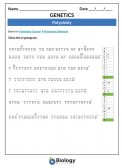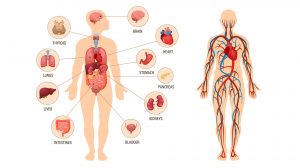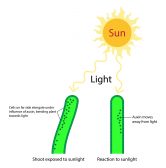Polyploidy

Ploidy refers to the number of chromosomal set
Table of Contents
Reviewed by: Mary Anne Clark, Ph.D.
Polyploidy
Polyploidy is defined as the state of being polyploid, which means having more than two sets of chromosomes in a nucleus. It is one of the different types of ploidy, which refers to the number of sets of homologous chromosomes in the genome of a cell or an organism. Each set of chromosomes is designated by n. Below are some other types of ploidy:
- Haploid (n) – with one set of chromosomes
- Diploid (2n) – with two sets of chromosomes
- Triploid (3n) – with three sets of chromosomes
- Tetraploid (4n) – with four sets of chromosomes
- Pentaploid (5n) – with five sets of chromosomes
- Hexaploid (6n) – with six sets of chromosomes
- Heptaploid (or septaploid) (7n) – with seven sets of chromosomes
- Octaploid (or octoploid) (8n) – with eight sets of chromosomes
Humans are diploid creatures, meaning for every chromosome in our body, there is another one to match it. However, not all cells of our body are diploid. Our somatic cells (body cells) are diploid whereas our reproductive cells (gametes) are haploid.
Polyploidy is common in plants and certain groups of fish and amphibians. It is possible for a species, particularly plant species, to produce offspring that contains more chromosomes than its parent. This can be a result of non-disjunction, where normally a diploid parent would produce diploid offspring, but in the case of non-disjunction in one of the parents, produces a polyploid.
In the case of triploids, although the creation of particular triploids in species is possible, they cannot reproduce themselves because of the inability to pair homologous chromosomes at meiosis, therefore preventing the formation of gametes.
Polyploidy is responsible for the creation of thousands of species in today’s planet and will continue to do so. It is also responsible for increasing genetic diversity and producing species showing an increase in size, vigor, and an increased resistance to disease.
Mutation Frequency
This tutorial and the previous lessons, Chromosome Mutations – I & II and Genetic Mutations, have investigated the different ways that mutations arise, and the following elaborates on the ways in which mutations are instigated.
Barring all external factors, mutations occur very rarely and are rarely expressed because many forms of mutation are expressed by a recessive allele aside from the repair mechanisms employed by the organism, e.g. DNA repair.
However, there are many mutagenic agents that artificially increase the rate of mutations in an organism. The following are some factors that increase genetic mutations in organisms:
- Members of species in a particular geographic area or ethnic origin are more susceptible to mutations
- High dosages of X-Rays or ultraviolet light can increase the likeliness of a mutation
- Radioactive substances increase the rate of mutations exponentially
Genetic mutations are a source of new variation in a species because it physically alters the sequence of nucleotides in a given sequence, therefore altering the genome in a unique way.
The next tutorial investigates genetic diversity in more detail, and how certain alleles (perhaps mutations) are favored over other alleles in natural selection…
 POLYPLOIDY – CRYPTOGRAM (pdf) | POLYPLOIDY – CRYPTOGRAM A fun activity on polyploidy! Print this cryptogram and find out who will be the first to solve the puzzle by translating the numbers back to letters. Subjects: Genetics & Evolution |
You will also like...

The Human Physiology
Physiology is the study of how living organisms function. Thus, human physiology deals specifically with the physiologic..

Plant Auxins – Phototropism & Geotropism
Plants produce hormones to regulate their growth. Auxins, for instance, influence plant growth. Know the role of auxin i..

Leaves
Leaves are the major photosynthetic organ of a plant. Apart from that, they are also crucial to water movement. In this ..

Digestion and Absorption of Food
The gastrointestinal system breaks down particles of ingested food into molecular forms by enzymes through digestion and..

New Zealand’s Unique Geographical History
Explore why New Zealand has such unique flora and fauna, and learn why long periods of geographical isolation. This less..

Origins of Life on Earth
Earth was created around 4.5 billion years ago and life began not long after. Primitive life likely possessed the elemen..
